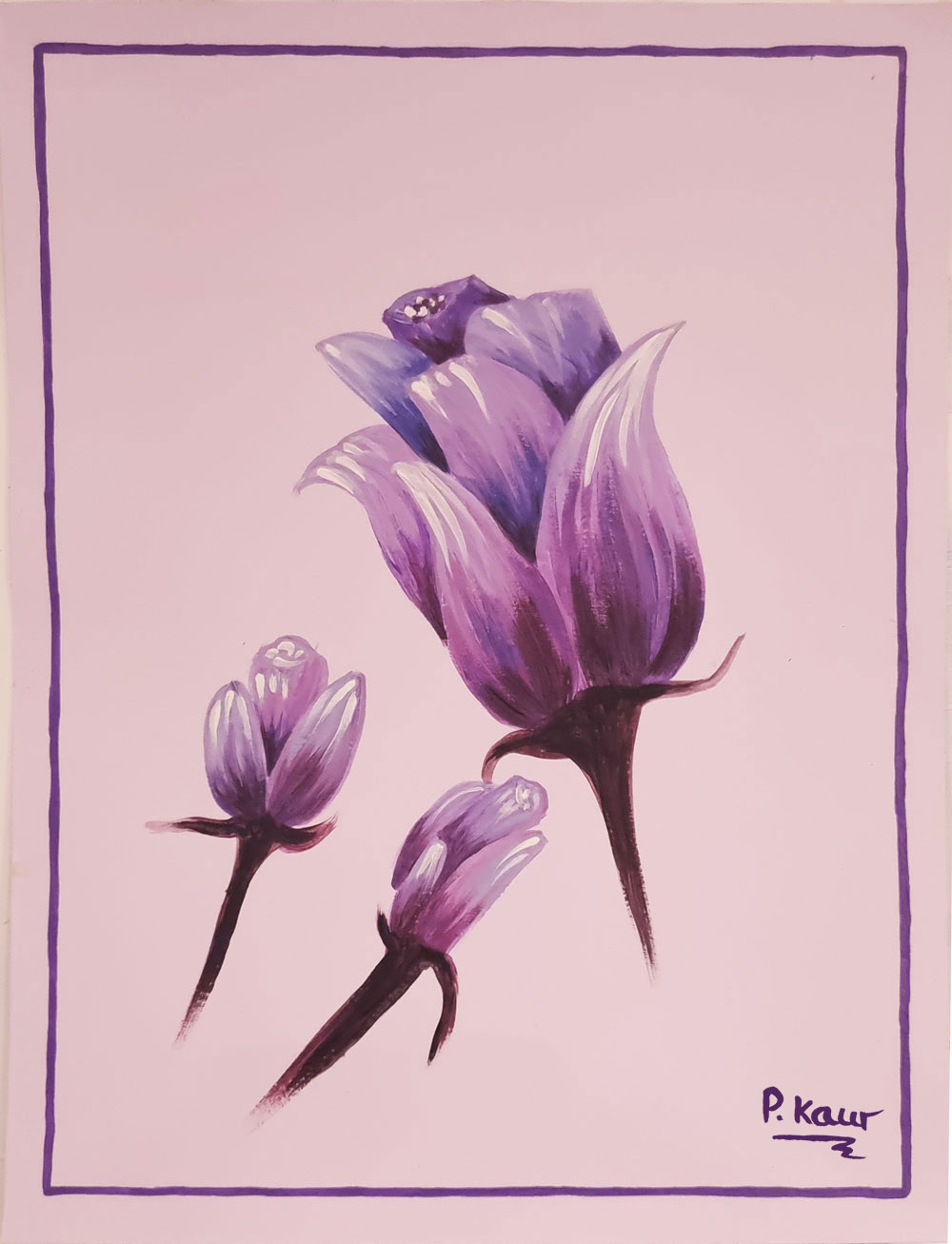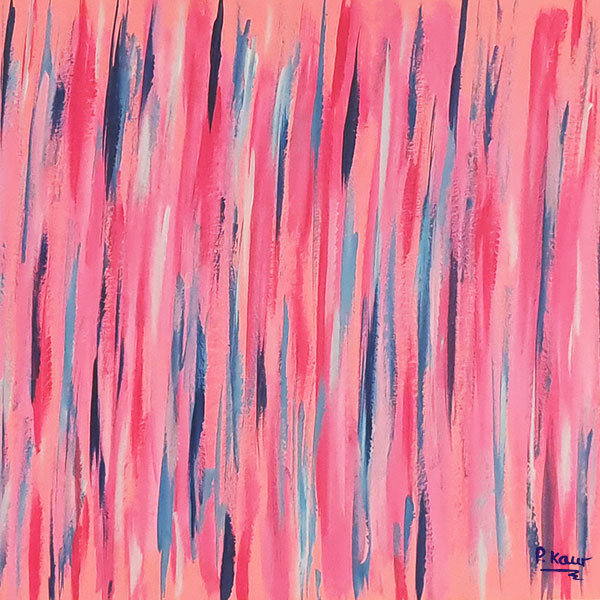Purple is rich warm colour, close to violet on the spectrum making it one of the last colours to be seen by the naked eye, red being the first with the longest wavelength.
Purple has had a relatively steady journey in society, with meanings and applications not changing too much over time. It has been associated with royalty and high society, and with higher ranks of religious institutions. It has also been associated with mysticism, magic and the spiritual realm. More recently in modern times, the psychedelic movement.
It is a secondary colour on the colour wheel, made of mixing blue and red together. The complementary colour is yellow. In the printing colour model of CMYK, purple is made by mixing magenta with either cyan or black.
Language
The English word of purple is derived from the Latin word purpul. The definition of purple has taken a long time because the pigment Tyrian purple, which was the main pigment used, was unpredictable so a variety of hues would appear. This is the case with other natural purple pigments.
The phrase ‘born to the purple’ was given to those who were born of royalty, particularly during the Byzantine Empire to differentiate between emperors who born royal and those who took over royal positions with war or by force.
Meaning
Purple began as a royal colour almost from the beginning of its use in society. This is due to the painstaking process of producing the popular natural purple dye known as Tyrian Purple. Because of its expense, it was only available to royalty and those of high society, for hundreds of years.
As red began to take over as the royal colour, purple was still highly prized and then worn by high end scholars and high ranking positions in the church. This may have added to the meaning associated with the higher spiritual realms.
As synthetic versions began coming out, its associated with magic and mysticism increased as the value of the colour decreased.
In the Thai tradition, widows wear purple as a colour of mourning.
Pigments
16,000 BCE – the earliest purple paint found using a mix of manganese and hematite. Hematite is reddish iron oxide. A purple variety of hematite is caput mortuum which is a purple version of red iron oxide. Manganese is chemical element 25, made in a dying star before it explodes in a supernova event. It’s a hard brittle silver metal and appears purple pink in various stages of oxidation and when found with other elements.
4000 years ago – Tyrian Purple. This natural dye was make from murex sea snails. 12,000 snails were needed to make 1 gram of pigment. It was expensive and highly labour intensive. The resulting dye also had an odour to it. Tyrian purple ranged from reddish to blue, depending on where the snails themselves were from. Chemical composition of the dye was close to indigo composition, so indigo was used as counterfeit dye. This was a crime for serious punishment. Tyrian purple though was less about the colour and more about its lustre richness and resistance to weather. In the year 2000, 1 gram of naturally made Tyrian Purple dye costs €2000.
Ancient China – Purple gromwell dye, made from the roots of the gromwell plant. This was also very labour intensive and sometimes unpredictable.
700 BCE – Han purple was the first synthetic pigment in China. It was used in the ancient world till end of the Han dynasty in 220 CE. Azurite was the only natural blue pigment in china. In its pure form its more indigo than purple. It becomes purple with the presence of red copper oxide. Han purple is less stable than Han blue. It fades and decomposes which would cause problems with applied in various decorative techniques.
800 CE – Japanese used a pigment extracted from the murasaki root.
Middle Ages – Purple was commonly made by mixing red and blue pigments. Blue pigments included azurite, lapis lazuli, woad and indigo. Red pigments included red ochre, cinnar, and red made from cochineal insects.
1758 – Cudbear, synthetic dye created by Dr Cuthbert Gordon, French purple was created at the same time.
1856 – Mauveine synthetic purple made by William Henry Perkin by accident. He mixed coal aniline with chromic acid and in 1857, patented it. He created an industrial process, a factory and produced the dye by the ton. One of the first modern industrial changes to transform fashion and chemical industry. By late Victorian, high society women were in purple. Coal was used for several other pigments including magenta, alizarin red, synthetic indigo. He also encouraged chemical use for other things like fertilizers, perfumes, medicines, explosives and food preservatives.
1859 – Cobalt violet was manufactured.
1950s – New range of synthetic pigments from the quinacridone family was being manufactured which are still in use today.
Natural pigments called anthocyanins are the pigments responsible for the purple colour in fruits vegetable and flowers. These pigments may appear red purple or black.
Tones
Purple like other colours can be warmed up or cooled down in colour and also in tone. Tones include mauve, lilac, violet, aubergine, lavender and royal purple, each with different amounts of blue or red added with white or black. It is violet on the spectrum of colour.
General use in society
Palaeolithic times
The earliest record of purple is in cave art and early decorative arts, using red and blue pigments mixed together.
Ancient times
Cleopatra loved purple and had her sails on her barge dyed purple. Her palaces also had purple furnishings, sofas drapes. When Caesar first came to Egypt, he was so impressed with her interiors and so upon arriving home, he decreed purple would be a royal colour. Before that Roman togas had a purple band, victorious soldiers could wear purple and gold and generals wore purple cloaks. Cleopatra’s barge with purple sail.
Nero banned anyone wearing purple but himself. Disobeying was execution. This rule let up in 2nd and 3rd centuries, for generals could wear purple.
Middle ages, medieval and renaissance
Bishops of byzantine church wore white robes with purple strips to show rank. Members of government would wear purple squares of fabric.
When Constantinople fell to Muslims in 1453, process was lost to make Tyrian Purple. It was rediscovered in mid-17th century. While this happened, red from cochineal dye became the royal colour. The process was well known with the Aztecs and Incas. Purple was made from mixing the red with indigo but wasn’t the same quality as Tyrian Purple.
In the Elizabethan era, purple was restricted to her and her family. Once the sumptuary laws were abandoned in Europe through 17th century, it could be worn by others so long as they could afford it, like bishops and professors.
Modern society
With advent of synthetic colours, purple was more widely available and so diluted the royal associated with the colour.
In the 1960s, it became the colour of counter culture associating with drugs and androgyny. Jimi Hendrix had his famous song Purple Haze bringing greater popularity to the colour.





